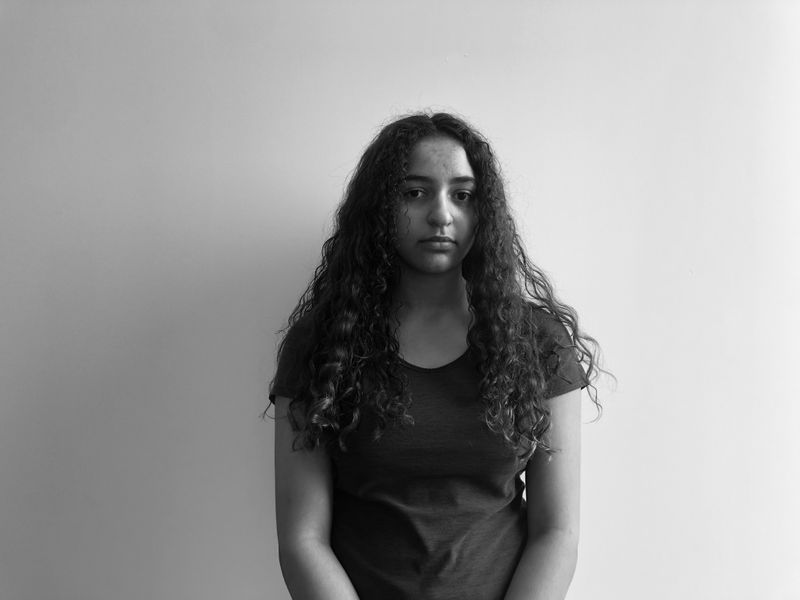We Are America
Accepting Myself
By Gwenyth

LEAD Innovation Studio, Missouri
I am biracial. My mom is white and my dad is black. For the first few years of my life, I grew up in Minnesota, a state with very little diversity. For a majority of this time, it was just me and my Mom. We’d receive some judgmental and disapproving looks as we passed by strangers, but for the most part it didn’t matter because I was young and didn’t notice or care. The earliest I can remember of someone not-so-subtly pointing out the difference of my skin was in 5th grade. We were going to have auditions for roles in our Wizard of Oz musical, and one of my classmates told me I couldn’t try out for Dorothy because I don’t look like her. So, I didn’t. At the time, I did not recognize the error in thinking that way.
Then, the summer before I started 6th grade we moved to Texas. There I was surrounded by people of all different skin tones and backgrounds. I was no longer not white enough or not black enough to fit in. Although the diversity of the people around me was way different than in Minnesota, I didn’t notice much of a change in my experiences based on my skin. There were very few scenarios where it was pointed out or even mattered. Had we stayed in Minnesota for my middle school years, I am almost certain that would not have been the case.
Near the end of 8th grade, my mom got a new job in Missouri. The move from Texas to Missouri, 2nd most diverse state to 37th, was a shock. For the first time, I consciously experienced being categorized and put in a box of stereotypes. I observed many people judge me based on their implicit biases rather than who I am as an individual. After one of my volleyball games in 9th grade, the mother of one of my teammates told her daughter, “watch your stuff closely so it doesn’t get stolen. You know…” then motioned to me. This made me feel horrible. I have never stolen anything in my life, and do not plan on it in the future.
When I moved here, I was also old enough to notice the stares and read the expressions behind them. When I would go out shopping or get food with my white mom and brother, I would notice looks of disgust and judgement. Unlike when I was younger, they were directed only at me as if I should feel ashamed of myself. These experiences created a new insecurity; I don’t look like I belong in my family. Whenever I look at a picture of my whole family or when we are together during the holidays, I can’t help but feel bittersweet when I think about how easily I could be mistaken as a friend rather than a family member. However, over the summer when I was kayaking with my cousin, someone mistook me for her sister for the first time. It made me feel so happy and I was able to cognitively assure myself that not everyone would look at me and assume I don’t fit in with my family.
I have learned that just about everyone will have a predetermined judgement of others based on implicit biases and stereotypes whether they intend to or not. Although most people are able to look past that, there are still a lot of people who can’t. I am able to block out most of those people, but sometimes those encounters stick with me. They have made me dislike myself and struggle with my identity. Over time I have worked to care less about how those people see me, because I know who I am and accept that. People have a tendency to try and label everyone, but I refuse to let that define me.
© Gwenyth. All rights reserved. If you are interested in quoting this story, contact the national team and we can put you in touch with the author’s teacher.